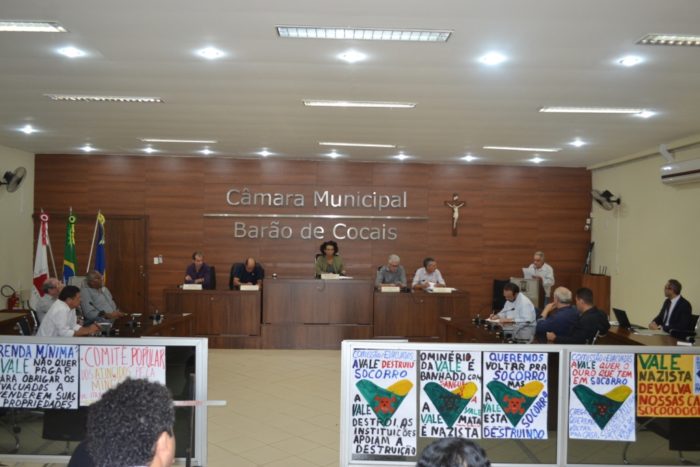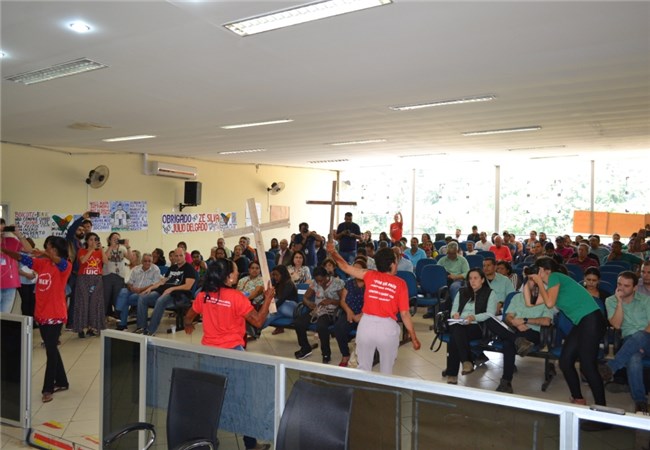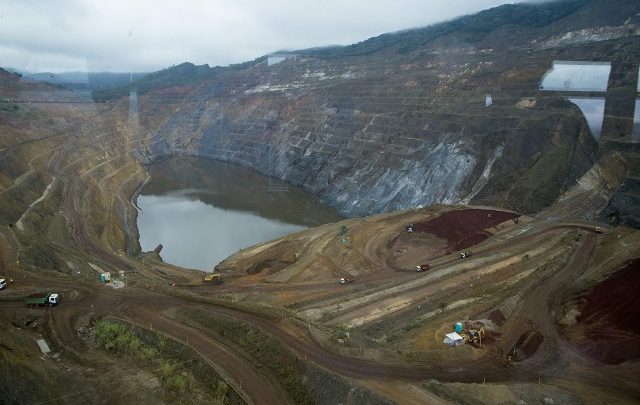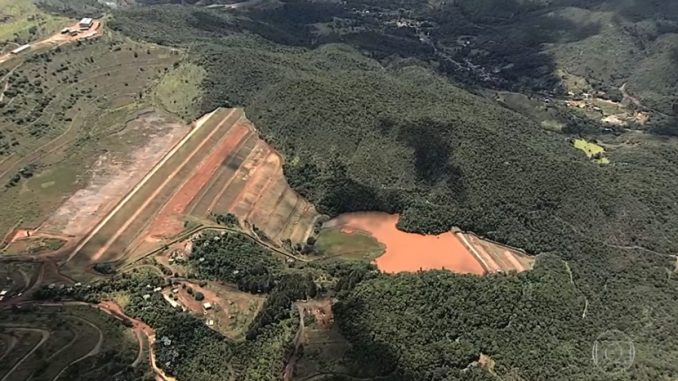Situated only 60km from Brumadinho, where a massive tailings dam collapse killed 270 workers and local residents on 25 January 2019, is the small town of Barão de Cocais, home to around 30,000 people. Just 1.5 km away lies the Gongo Soco mine, owned by mining giant Vale.
Originally a gold mine, once the largest in Brazil, it was worked in part by skilled miners from Cornwall. Abandoned in the 1850s, it was revived after 1986 as a rich source of iron ore, closing again in 2016. The mine workings, quarried terraces and tailings dams remain, in an increasingly dilapidated condition.
Brazilian company Vale’s reputation is at an all-time low. Vale also owned the Feijão iron ore mine which destroyed Brumadinho, and was co-owner of the mine at Mariana which collapsed in 2015, killing at least 19 people, and unleashing the worst pollution disaster in Brazil’s history. The company faces multiple investigations, though in Brazil’s tortuous and often corrupt legal system, legal proceedings may never be completed.
Embankment danger
The mine site at Barão includes massive earth embankments, and the one on the north side has started to move, reaching a speed of 16 cms per day since 23 May and is expected to collapse. This will not necessarily cause the breach of the Upper South Tailings Dam. But, as Wagner Nascimento, head of the mining dam security division of the National Mining Agency (ANM), explains, ‘the risk is that the vibration caused by the collapse of the embankment becomes the trigger than affects the stability of the tailings dam. There’s no way of predicting what will happen.’
As Lara Alves writes in O Tempo, if the tailings dam breaches, the tidal wave of mud would reach the town of Barão de Cocais in about an hour. Communities located next to the self-rescue zone would be flooded more quickly, and it is these, where the residents could not be moved in time, that were evacuated on 7 February.
The company, Vale, says that both embankment and dam are being monitored around the clock. But they claim that there are no ‘technical factors’ to confirm that the collapse of a part of the embankment could lead to the breach of the dam. On May 17, ANM banned all movement in the area, two days after Vale rerouted passenger trains on the Vitoria-Minas line away from the danger area. Five days later all freight train movements were suspended.


A public meeting about the risk of a dam collapse was held on 27 May at the Barão de Cocais city council. ‘I don’t want the people of Cocais to give in to anyone,’ said Décio dos Santos, the mayor. Councillors, federal deputies involved in the investigation of the Brumadinho disaster and Vale officials attended the meeting. Also present were religious bodies, community groups, local businesses and residents of the evacuated villages and other nearby settlements.
We have been totally abandoned by the federal government and by the state governor, Romeu Zema. We’ve tried everything to get them to get off the fence and give some support to our town. — Décio dos Santos, mayor of Barão dos Cocais
Meanwhile, as the BBC’s Will Grant describes, ‘the pavements of the streets inside the flood zone [of the town] have been painted orange. Some shops, banks and even the post office have been closed for days, and an evacuation route has been marked out with signs.’
The Movimento dos Atingidos por Barragens (MAB) has been working with local communities in the area since February, but claims that Vale has been hostile to their presence.

MAB says that 6 million cubic metres of spoil could be unleashed, affecting Socorro, Tabuleiro, Piteiras e Vila Congo, the area surrounding Rio São João in the centre of Barão de Cocais, and the municipalities of São Gonçalo do Rio Abaixo and Santa Bárbara. The tide of mud could contaminate the Piracicaba and Doce rivers and the reservoir of the Petí hydro-electric plant.
The company, says MAB, has been refusing to allow evacuees to return to their homes to collect documents and personal possessions, while allowing 200 workers through to build a containing wall.
Six thousand people, living close to the Rio São João are in danger, MAB says, yet the company is not taking the necessary precautions for their evacuation. Voluntary evacuation should be guaranteed to all, they say, irrespective of the condition of the dam.
The residents of Barão and the organizations working with them have drawn up a comprehensive set of demands: transfer of evacuated families from hotels to homes rented by the company; voluntary evacuation for everyone who wants to move away from the secondary area; technical assistance to effect repairs; emergency payments; appointment of independent auditors to value the effects of the dam event; that reconstruction should not be controlled by the company but by the victims, provided with technical advice.

